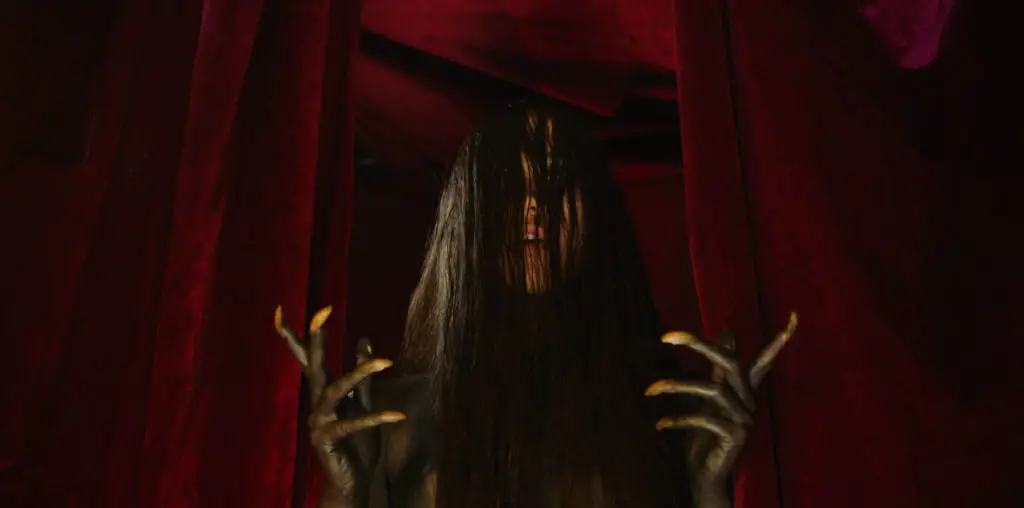
Love ‘em or hate ‘em, the music of They Might Be Giants is definitely unique, and standing out from the crowd is only one many reasons for their amazing longevity in the pop music world. Shot over seven months in 2001 as the Giants prepared for their first studio record in five years, Gigantic (A Tale of Two Johns) gives audiences an in-depth look at the 20-year history of the band, featuring live concert footage, classic music videos, commentaries from friends and fans, and of course, plenty of insight from the Johns themselves.
We recently spoke with filmmaker A.J. Schnack to find out what it was like to work with these Gigantic pop heroes.
What are some of the struggles you encountered in getting this documentary produced?
The hardest thing for me was the edit – writing the script in post. We had all this footage and it was much more challenging than I thought it would be to shape it, to decide which quotes to use, which songs. My previous experience was in narrative stuff, or in projects like music videos where the timing is dictated by the song, so I was a bit naive about how long it would take. I thought four weeks, maybe a month and a half. It ended up taking six months.
Money is always a huge obstacle for filmmakers, but especially doc filmmakers where investing is perhaps less glamorous-sounding. How does one go about seeking funding for docs?
In our case, the movie was self-funded. My producer/partner/wife, Shirley Moyers, and I had built a production company over many years and we decided that Gigantic would be our first feature-length project. I guess that I always assumed that most nonfiction films were funded by grants or by networks like HBO, and I suppose that is still true in a number of cases. But during our festival run, I got to meet a number of other nonfiction filmmakers who seem to have funded their films in much the same way as narrative features – small investments by friends or friends of friends.
Any resources or secrets you care to divulge?
One idea that I heard about that I thought was great was to get a wealthy friend to host an afternoon reception and to invite a bunch of other wealthy people. Then the filmmaker makes a pitch, and if the audience is receptive, they leave checks at the door. There’s a game show quality to that idea that is really appealing to me.
Does it make it any easier doing a music doc? (Which, let’s face it, seems a lot more commercial.)
I think that you probably have more options for home video distribution with a music doc, especially if the band has a certain following that the companies can quantify. But, for theatrical distribution, it’s still an uphill battle. It’s the same thing that other nonfiction filmmakers go through, but that I hope, with the success of Spellbound and “Capturing the Friedmans,” is changing. We were fortunate to get distribution with Cowboy Pictures, which is a company that I really had hopes for when we started. But we would have never had that opportunity if our DVD company, Plexifilm, which is this great, brand new outfit, hadn’t believed in Gigantic and helped push for a theatrical distribution deal. There were a number of other home video companies who were interested, but just wanted to get us out on DVD as soon as possible.
Legal clearances are always an issue for filmmakers, were there any problems in this area and how did you overcome them?
We just tried to deal with everything up front in terms of song rights. It ended up being more difficult than we anticipated because we just thought, oh the band is OK with us doing this movie, so the rights won’t be a problem. But, of course, there are all the record companies, the film companies, the publishing companies, the TV networks, and they all want their piece of a pretty tiny pie. But whenever it seemed like a piece of music or footage would be prohibitively expensive, or if we began to sense that the owner of the rights didn’t understand the low budget nature of the project, we just had to drop that music or footage from the film and move on.
Any general advice about making a doc, say, if you had to tell a friend one thing they must know about making their film, what would you tell them?
Make an entertaining film. For instance, we’re opening on June 20 in Boston and Chicago, the same day as The Hulk. So when people open their papers and want to go see a movie that night, they might be choosing between Gigantic and The Hulk. If the audience thinks that they won’t be entertained or thrilled or inspired or haunted by the movie you made, they’ll go see something else. I didn’t really realize that until we were in Washington DC a few weeks ago and I heard someone say, “I’m really glad we went to see (Gigantic) instead of Bruce Almighty. Like I hadn’t realized that that was the option!
Get the rest of the interview in part two of A.J. SCHNACK: WALKING WITH GIANTS>>>
